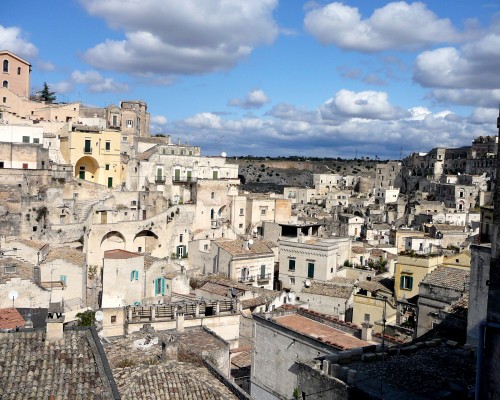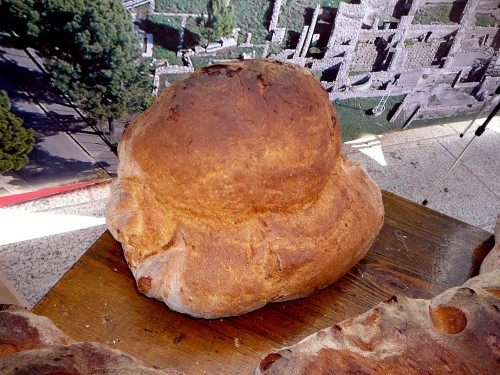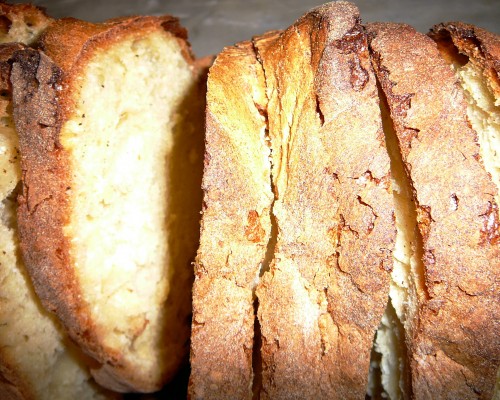Matera, located on Italy’s anklebone, boasts of being a UNESCO World Heritage Center with its ancient caves carved in the soft tufa that date back to prehistoric times. (Matera is one of the only places on earth where the residents are still living where their ancestors lived 9,000 years ago.) But what the Materani and visitors alike are more likely to be discussing at any minute of the day is the bread of Matera. Like the Lardo di Colonnata, the Pane di Matera has been awarded the designation IGP (Indicazione Geografica Protetta), the only food so honored in the Basilicata region.

A van driver tells his clients about the time he was at school in the north and three fellow students each brought back bread from their region. His soft, yeasty, fragrant, slightly salted bread with a crunchy crust won hands down over the finely-textured saltless bread from Toscana and the tasty wheat bread from Bolzano. On the train heading north out of Bari, every third person is carrying a kilo or two of Pane di Matera.

The tradition of Matera bread goes back to the Kingdom of Naples in the 15th and 16th centuries. It still uses the ancient varieties of hard wheat grown in the area, such as Cappelli, Duro Lucano, Capeiti and Appulo, whose flours give the bread its unique flavor. These typical varieties must make up at least 20% of the bread’s composition under the IGP rules. The preparation of the yeast, which uses fresh fruit in the process, is unique. Matera bread can only be made with a cone or crested shape and must weigh one or two kilograms (2.2 to 4.4 pounds) per loaf. It has a straw-colored, soft interior with a characteristic honeycomb look, which is surrounded by a hard crunchy crust.

Not more than thirty years ago, the bread-making day was a fixed event for the Matera housewife. It began the evening before by collecting the yeast, kept over from the last bread-making day, and making the starter dough that was then left to rise in the majustr, a large clay container. The next morning, a larger amount of dough was made using as much as 15 kilos of flour for big families. After leavening, the local baker made his rounds to pick up the dough. The women then went to the baker’s forno where they carefully watched over what happened to their own bread in the wood-burning oven. To recognize their own loaves, they used to mark each loaf on the fold with a hard wooden stamp. The stamp is still used in artisan bakeries today as are the practices of the Matera housewives of yore, although with the help of large kneading machines and long leavening tables. Today, few people make Pane di Matera at home.
Is Pane di Matera the best bread in Italy?
